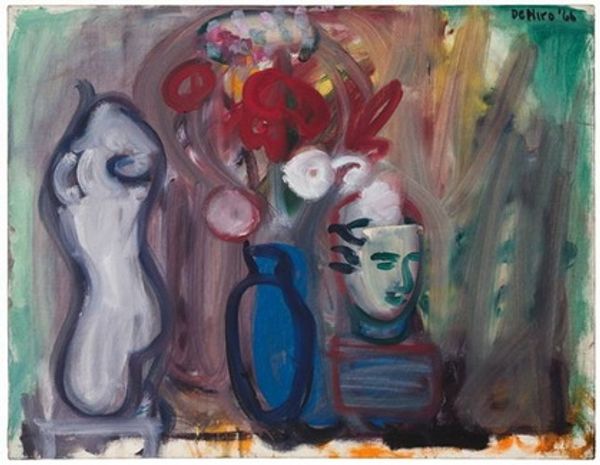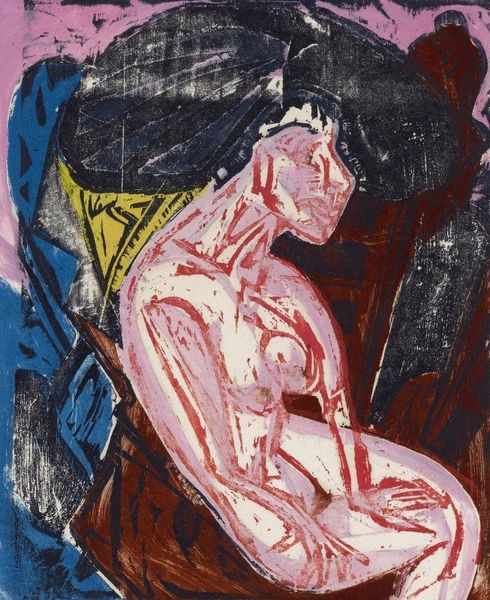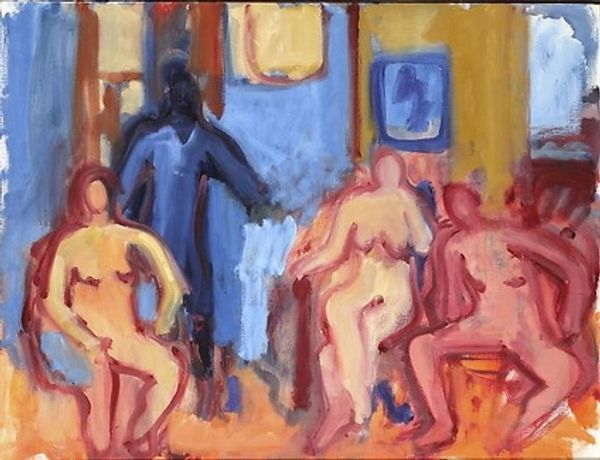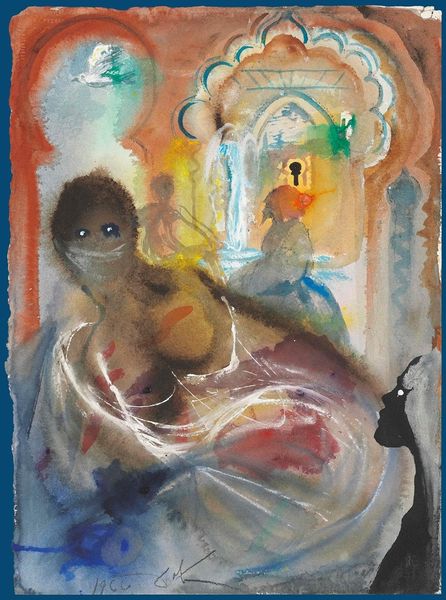
#
abstract painting
#
handmade artwork painting
#
fluid art
#
japanese art
#
acrylic on canvas
#
paint stroke
#
painting painterly
#
watercolour bleed
#
watercolour illustration
#
munch-inspired
Copyright: Robert De Niro, Sr.,Fair Use
Curator: Robert De Niro, Sr.'s "Three Women," created in 1968, is an intriguing example of his move toward figuration while retaining an abstract expressionist sensibility. Painted in acrylic on canvas, the artwork presents a captivating, if somewhat unsettling, scene. What's your initial reaction to it? Editor: There's an immediacy to it; a raw, almost frantic quality. The muted palette, dominated by pinks and reds, feels unsettling. It evokes a certain discomfort, as though we've stumbled upon a private, perhaps painful, moment. The bodies feel vulnerable and exposed, not just physically, but emotionally too. Curator: De Niro’s approach was very process-oriented, constantly revising and repainting. You can almost see the ghost of previous images underneath, traces of the labor. He often incorporated found materials and emphasized the physical act of applying paint, really challenging the traditional concept of refined artistry. Do you see that in the execution here? Editor: Absolutely. The brushstrokes are thick and visible; the paint drips, suggesting a quick, almost impulsive execution. It challenges notions of beauty and idealised femininity that have plagued art history, doesn't it? These aren’t passive muses; their poses, especially the figure lying down, feel active and assertive. Curator: Indeed. It’s also crucial to remember the context. De Niro, despite some recognition, struggled to achieve the same commercial success as some of his contemporaries. This undoubtedly impacted his materials, choices, and, to some degree, his process. Do you think that the somewhat unresolved feeling we get comes down to that kind of making? Editor: Possibly, but it also opens up an interpretation that is very specific to its era. Remember 1968; upheaval, societal shifts, and a growing awareness of social inequalities. De Niro seems to be reflecting, perhaps unconsciously, those tensions onto his subjects. These women feel emblematic of the era's questioning of traditional gender roles. The fact that there is no specific expression contributes to this. Curator: It's hard not to appreciate the artist's deliberate embrace of materiality as message, creating a kind of intentional imperfection. The blurring between the artistic 'success' of finish versus its rawer production becomes the very core of this visual statement. Editor: Exactly. We are forced to confront not just the subject, but also the social realities that informed its creation, a critical element in examining art as an agent for change. The labor is palpable, a stark contrast to polished representation, challenging a male gaze. Curator: Thank you, that was certainly illuminating. It really brings De Niro Sr.’s artistic output into the current discourses surrounding the social elements of material. Editor: My pleasure. And, hopefully, it allows us all to reflect on the continuing relevance of art as a mirror to ourselves and to society at large.
Comments
No comments
Be the first to comment and join the conversation on the ultimate creative platform.













